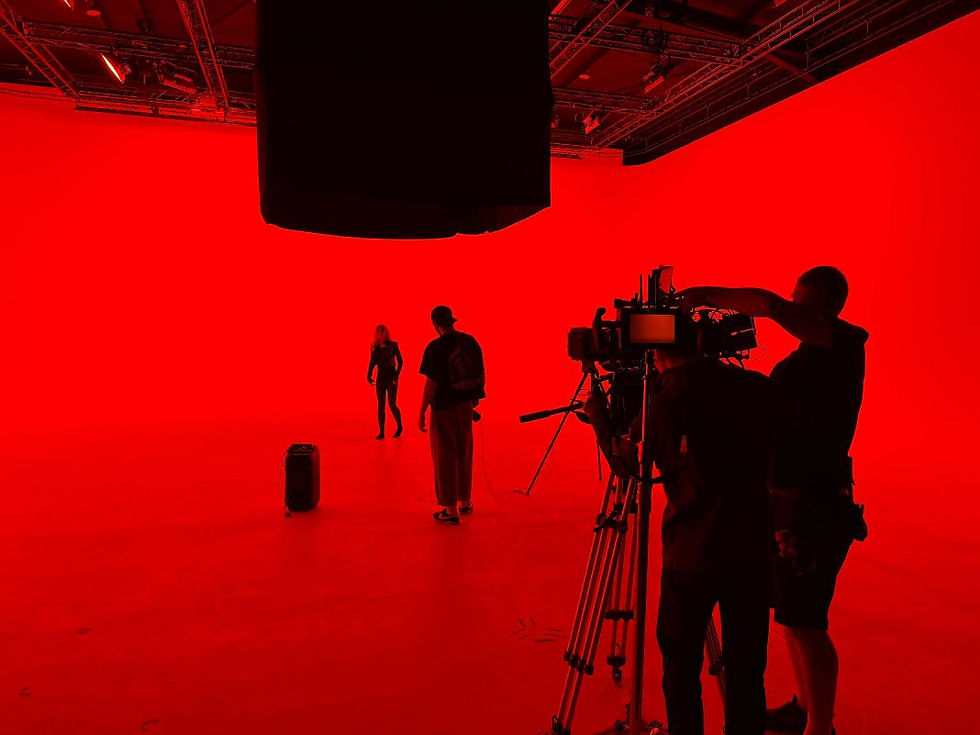Understanding Studio Grid Load Capacity: What Productions Need to Know
- James Duffy
- Nov 10
- 4 min read
Why is understanding studio grid load capacity so important for productions?
Studio grid load capacity sets the maximum load limit for rigging, lighting, or set construction above your stage. Failing to follow grid safety procedures can cause production halts, equipment loss, or insurance claims being denied. Every successful shoot starts with a full understanding of the studio grid structure, safe working load, and crew responsibility for compliance.
Why should productions never overlook grid load safety and risk a studio rigging failure?
Imagine a major commercial shoot where a rigging safety check is missed and the studio grid is overloaded. The risk is not just damaged kit, there is the chance of a complete studio rigging failure, halted production, and possible crew liability. Recent incidents in UK studios highlight how quickly budgets and reputations suffer when grid inspection is skipped. The Health and Safety Executive, BECTU, and every reputable insurance provider now expect every crew to perform rigorous grid load risk assessments before setup.
Legal Note: If your insurance claim is denied due to a missed grid safety inspection, production costs and liability could fall to your business.
What is a studio grid load capacity, and how does grid structure affect safety?
A studio grid load capacity is the highest safe weight the grid structure can support, as certified by engineering inspection. Studio grids differ in age, construction, and previous upgrades. Open lattice designs, truss systems, or reinforced beams all affect grid inspection protocols and the safe working load for each section. Never rely solely on a visual check—always request a recent technical specification sheet and the most up-to-date SWL plate.
Safety Reminder: Studio grid inspection and documentation are essential before rigging to prevent production halts and ensure studio compliance.
How do you interpret load ratings and safety factors for a studio grid?
Studio grid safety relies on reading both the safe working load and safety factor for each grid or rigging bay. For example, if a rating plate reads “safe working load two hundred kilograms five to one,” the grid was tested to failure at one thousand kilograms, but the limit for use is two hundred kilograms. Safety factors account for variables such as wear, dynamic load, or point load miscalculations. Always use the lowest current figure in documentation.
Technical Note: The difference between manufacturer and real world limits grows as a grid ages or if it is repaired. Always check the grid inspection log and confirm every safety certificate before trusting a rating.
How many lights, motors, or scenic elements can you hang on a studio grid without exceeding the load limit?
A studio grid weight limit is only as safe as your calculation. Use rigging calculation worksheets and review manufacturer data for every light, moving head, or scenic item. Uniform load distribution is always safer than relying on a single point load. When the combined weight nears the safe working load, consult a studio engineer or rigging specialist. Always leave a margin for safety and record your decisions for insurance compliance.
Safety Reminder: Each studio grid structure may have different ratings for different sections. Stay under every load limit and always use secondary safety wires.

What advanced planning is needed for complex or heavy studio rigging?
For ambitious setups like LED walls, large scenic elements, or moving rigs, the studio grid structure and load rating need a professional assessment. External engineers or specialist rigging teams must be involved in both the planning and sign off phases. Grid upgrades, structural assessments, and dynamic load planning are sometimes required for heavier setups. Regular risk reviews and close communication with the studio technical team prevent last minute surprises.
Legal Note: Insurance providers may void claims if the grid load risk review is not documented and signed off by a qualified engineer.
What are the most common rigging mistakes in UK studios that lead to grid overloading?
Studios see recurring mistakes: exceeding load limits for a single rigging bay, ignoring older grid welds, or skipping a proper studio grid inspection. “Eyeballing” instead of using documentation is a frequent cause of grid overloading and production disruption. Always keep inspection logs, run a final rig safety check, and use a production checklist for every build.
What is a studio grid pre rig safety checklist?
Follow this production checklist before any rigging begins:
Confirm studio grid specifications, the most recent inspection log, and the current safe working load for each bay.
Add together the weight of every item (lighting, motors, set pieces) for each rigging point.
Ensure all items have secondary safety systems and correct fixings.
Double check all calculations and gain written sign off from the relevant technical crew.
Safety Reminder: A checklist is the most effective way to reduce the risk of grid overloading or insurance issues on set.
Studio grid load frequently asked questions
Can we add more equipment at the last minute if the grid looks safe?
Only after updating your rigging calculation, reviewing the load limit, and getting technical team approval.
Who approves the grid before any rigging begins?
Studio technical staff are responsible for approval, and external riggers or engineers are required for setups above certain grid load thresholds.
Do heavy or complex rigs always require an engineer’s sign off for insurance compliance?
For setups that approach or exceed standard limits, yes. Your production insurance will often require external sign off and grid inspection documentation.
What are the risks if we exceed the safe working load on a studio grid?
Grid overloading can lead to equipment damage, denied insurance claims, and crew liability for any incident on set.
Where can I find guidance on studio grid inspection and rigging safety?
Review the studio’s own grid safety policy, UK Health and Safety Executive guidelines, and consult professional rigging or inspection teams for best practice.






Comments